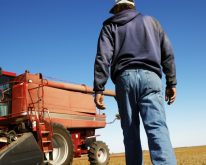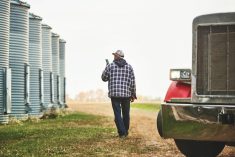This important federal program remains poorly understood on too many farms — perhaps on your farm too. Here’s why it may prove so relevant
Across Canada, farmers are wondering if AgriStability still has a fit on their farms. As I wrote in the last issue of Country Guide, government funding of AgriStability has been significantly cut under Growing Forward 2.
However, instead of lamenting these cuts, it is more important farmers evaluate the revised 2013 AgriStability program to decide if this risk management program is needed for their farm business.
Read Also

How to go from managing to mentoring
https://www.youtube.com/shorts/L7Q7OZ_d3cI There’s a moment every leader remembers: that moment when someone looks at them differently. Not because of what that…
Here is the conversation farmers should be having about 2013 AgriStability:
Q1: What exactly is AgriStability under Growing Forward 2?
First and foremost AgriStability is a margin-based program. A producer who is enrolled in AgriStability receives a government payment when their actual margin declines by more than 30 per cent from their reference (historical) margin. AgriStability does not guarantee a level of revenue and does not guarantee a farmer will make a profit.
Q2: What is margin?
Margin is the difference between revenue and expenses. If revenue exceeds expenses, you have a positive margin. When expenses exceed revenues, your margin is negative.
Q3: What is reference margin?
Your reference margin is the olympic average of your margins over the last five years. (Best and worst margins are excluded and the remaining three are averaged.)
Q4: If you receive a payment when your margin declines more than 30 per cent, does this not guarantee a profit?
No, for three reasons. Most importantly, not all expenses are included in the calculation of the margin. Most variable costs directly related to production (i.e. seed, pesticides, fertilizers, fuel and arm’s-length labour) are included in the calculation. Fixed costs like land rent, equipment (repairs, purchases, and even leases), hired custom work, building costs, taxes, capital cost allowance, and a host of other expenses are not included. So, having a profitable reference margin does not necessarily mean you have a profitable farm business.
Second, if you have experienced a number of years of declining or poor margins due to uninsured production losses, poor prices, or high costs, your reference margin may be so low that it does not provide the necessary coverage to meet the rising input costs farmers are facing.
Third, under Growing Forward 2, limits have now been placed on the reference margin. If the total of the allowable expenses are less than the olympic-average reference margin, then the reference margin is limited to the allowable expenses.
Q5: If a farm has had high margins, does AgriStability provide better protection?
No question about it. The reference margin is different for every farm. Every producer must look at their own historical margins and also weigh the risk of their 2013 margin dropping by more than 30 per cent from your personal margin history.
Q6: If AgriStability provides more protection for some farmers than others, do these farmers have to pay more?
Like the protection, the costs to participate in AgriStability are individualized. Everyone has to pay an administration fee of $55 annually. As well, there is a premium of $315 per $100,000 of reference margin. These fees are due April 30 each year.
This seems like a very low cost for insuring that your variable costs are covered. The actual premium is low but producers who participate in AgriStability may pay substantial accounting fees to complete their AgriStability applications and supplementary forms and to track inventory. Furthermore, part of any indemnity payment made to a producer is withheld in lieu of having farmers pay higher premiums for coverage.
Q7: By enrolling in AgriStability, am I guaranteed to receive 70 per cent of my calculated margin?
Not exactly. Unlike most insurance programs, the premium AgriStability charges does not offset the producer’s share of the indemnity risk. Instead, the government withholds 30 per cent of any indemnity payment made. In effect, the farmer is self-insuring the first 30 per cent of any margin decline and then an additional 30 per cent of any further declines.
So the maximum AgriStability payment you can receive from the government is actually 70 per cent of 70 per cent (i.e. 49 per cent) of your reference margin.
Q8: Do I need AgriStability?
You are the only one who can answer this question. Without doubt, AgriStability will protect you from severe margin declines resulting from poor production, falling prices, market interruptions and rising input costs. But you can protect yourself from three of these problems through other insurance.
Production insurance will cover production problems. You can use the futures and options markets to protect against falling prices. If you live in Alberta or Ontario you can purchase revenue insurance which mitigates falling prices. You can use contracts to protect against market interruptions.
However, there is a real dollar cost for these risk management tools, whereas the risk management cost is deferred through AgriStability until you are in a claim position.
The rising cost of inputs is the one factor for which there are few risk management options and which AgriStability provides protection for. Is this a risk you want insurance to cover?
Finally, as I pointed out in the last issue, there is at least one private-industry insurer who now offers a margin-based insurance product.
Q9: Are there other factors I should consider in deciding whether to participate in AgriStability in 2013?
At a recent Alberta Financial Services Corp, meeting addressing the 2013 AgriStability changes, the presenters brought up one more point farmers need to weigh in the balance.
This same point is made on the AFSC AgriStability website.
Here is the direct quote: “Participation in AgriStability may be a requirement for participating in the Advance Payment Program, or in accessing other credit.”
As I asked in the last issue of Country Guide, how much insurance do you really need, and what type of insurance best meets those needs? Does the 2013 AgriStability provide the risk management you need?
— Gerald Pilger is a farmer and writer at Ohaton, Alta. and a regular contributor to Country Guide.















